This week we have a potpourri of news to share. First up is some progress on Lucky Thirteen‘s Type A-2 Ball Turret.
As previously mentioned, the current goal is to restore the turret’s motor assembly – known as the Double Power Unit – to working condition, along with the various gears which attach to it. The idea is to showcase the innards of the turret, all functioning, as a way to build interest and support for the ball itself. (Primarily because, unless something surprising occurs, a new one will have to be cast using the 3D scans we are currently reverse engineering.)
That being the case, we were excited to test fit the recently restored early-style hand control. For all ball turrets, regardless of variant, the hand control attached to the forward side of the gunsight mount. In turn, the gunsight mount sat under the electric motor, being bolted to the hydraulic transmissions on either side. This mount was one of the first pieces we acquired for the turret, but we were dismayed to learn that it was not the correct variant: the holes for the bolts did not align. It turned out that the bracket we had was off a Type A-13A, a turret only used on late-Consolidated B-24s and the short-lived Consolidated B-32.
So, it had to be replaced.
Turret restoration guru Harland Avezzie of North American Restorations was able to locate one, and we were able to purchase it using funds thanks to donations from our supporters. This discovery being covered in our first newsletter, our good friend Stijn Claus stepped up to also purchase the fluid overflow cup which attached to the front of this bracket.
Now that these pieces are here and restored – and everything fits together as it should – the next step is to do maintenance on the electric motor (new brushes, change out the bearing) and acquire the control arms which connect the hand control to the transmission. Then we can begin final assembly!
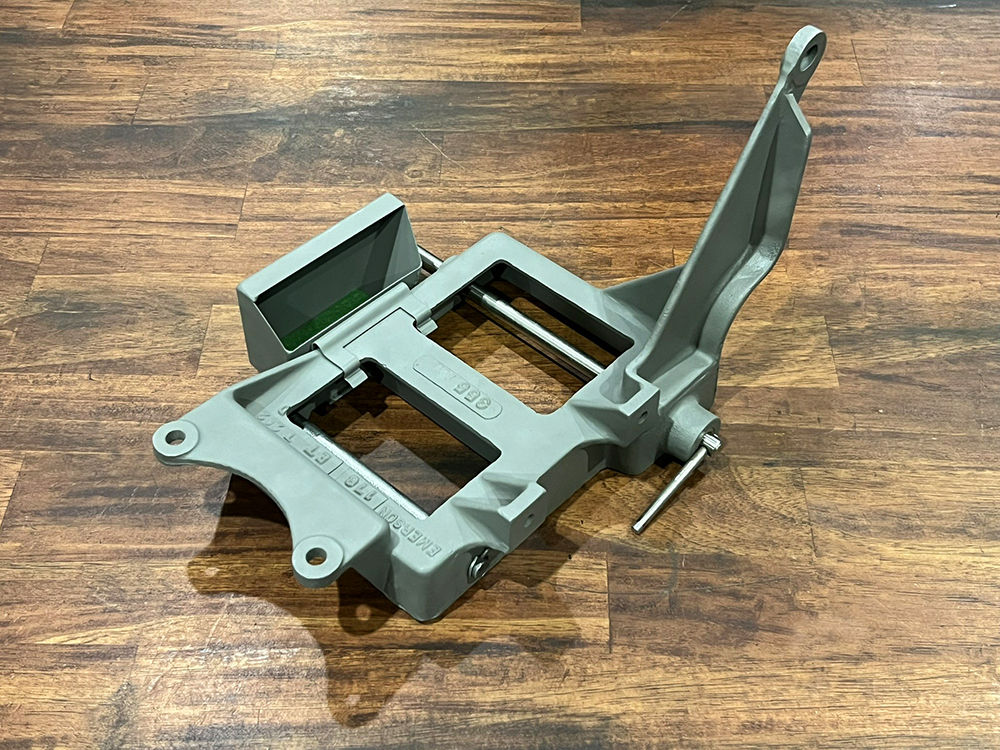
The newly restored sight and control bracket for Lucky Thirteen‘s Type A-2 Ball Turret.
If you look closely at the hydraulic overflow cup, you can see a green felt pad. This was for soaking up any hydraulic fluid which made it to the cup.
Photo taken 28 January 2025.
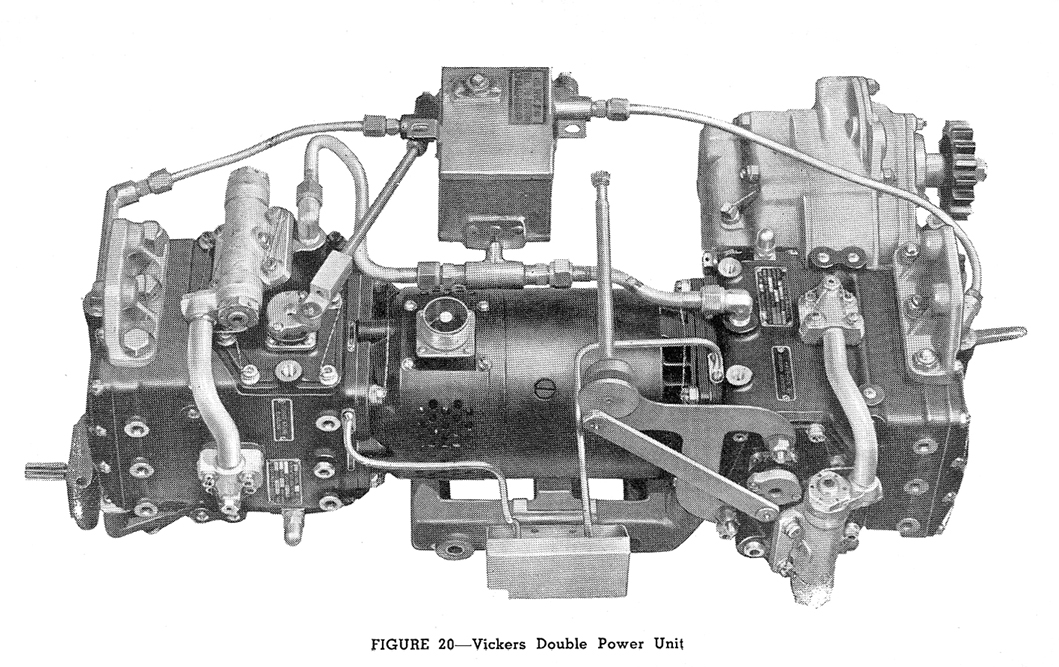
Manual illustration of the motor assembly, complete with gears, as found on the Type A-2, A-2A, and A-13 Ball Turrets. The sight and control bracket, with its hydraulic drip cup, can be seen on the bottom center.
The small box in the upper center is the hydraulic reservoir for the two transmissions. Our example will require some minor restoration, the biggest being the replacement of the various broken tube lines.
The levers hanging freely beside the reservoir, are those which connect the transmissions to the hand control – one for elevation and one for azimuth. We will need to acquire examples of these.
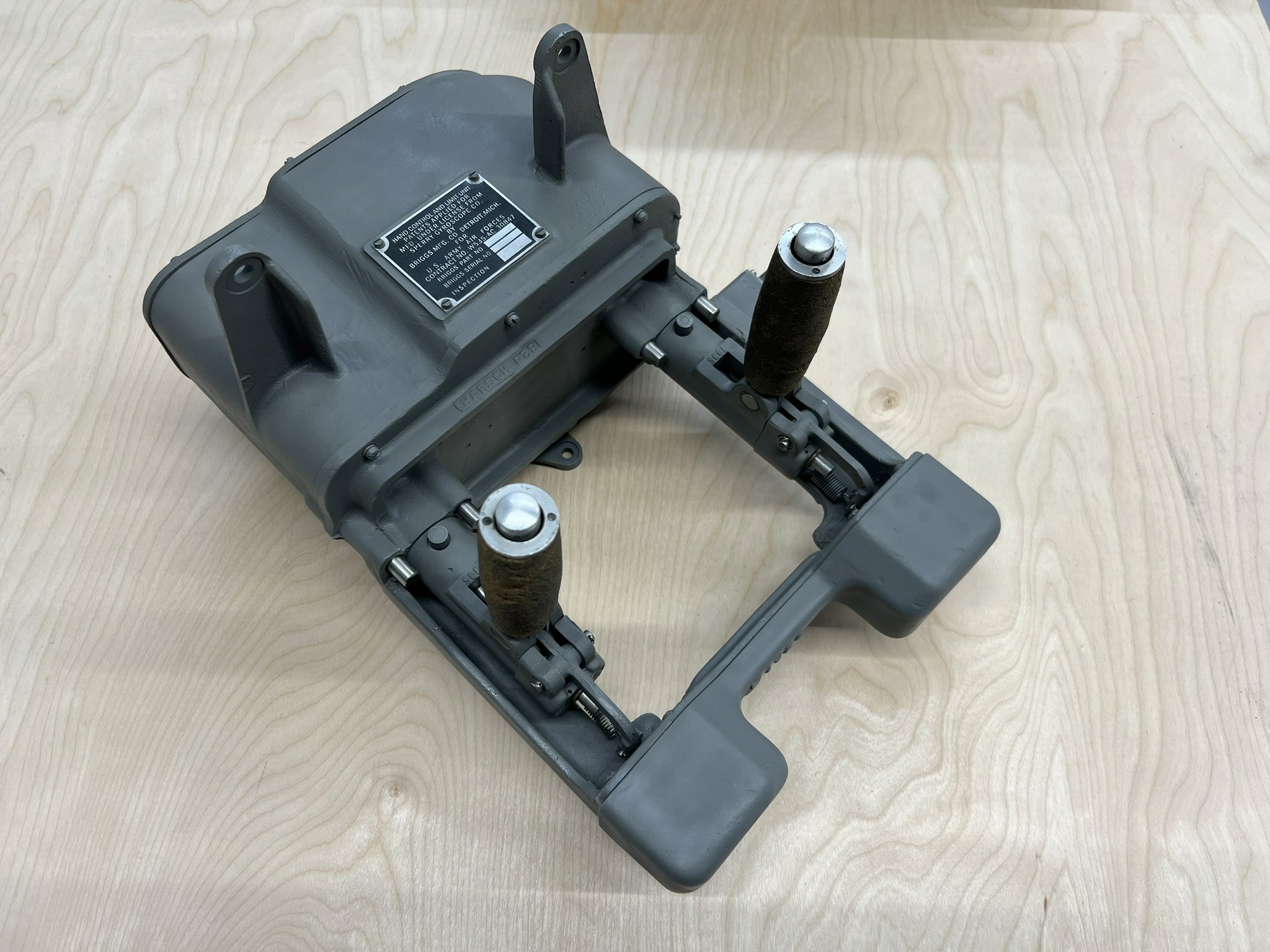
The recently restored hand control for Lucky Thirteen’s Type A-2 Ball Turret.
This style hand control, with the large nubs on the bottom for the gunfire relay switches, was unique to the A-2 and early A-13s.
Photo taken 6 November 2024.
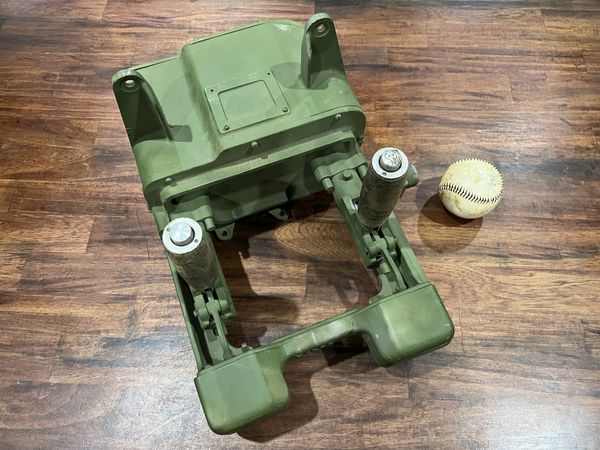
Our A-2 Hand Control came to us via our friends at the Planes of Fame Museum in Chino, California. Baseball for scale.
At some point in its history, someone made the unwise decision to spray paint this piece green. The entire control was disassembled for restoration, with the paint removed and replaced with the correct gray used by Briggs Manufacturing during the war.
Photo taken 14 February 2024.
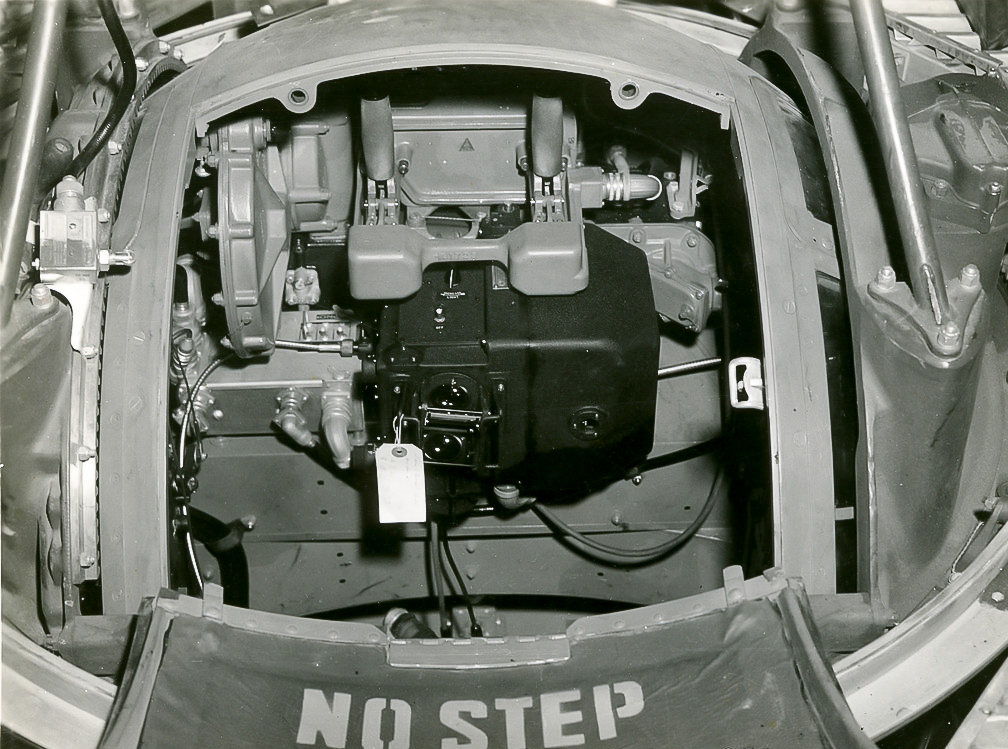
Factory photo of an early Type A-13 Ball Turret. This turret was identical to the A-2, except that its hanger assembly was altered to fit a Consolidated B-24.
The early style hand control can be seen here.
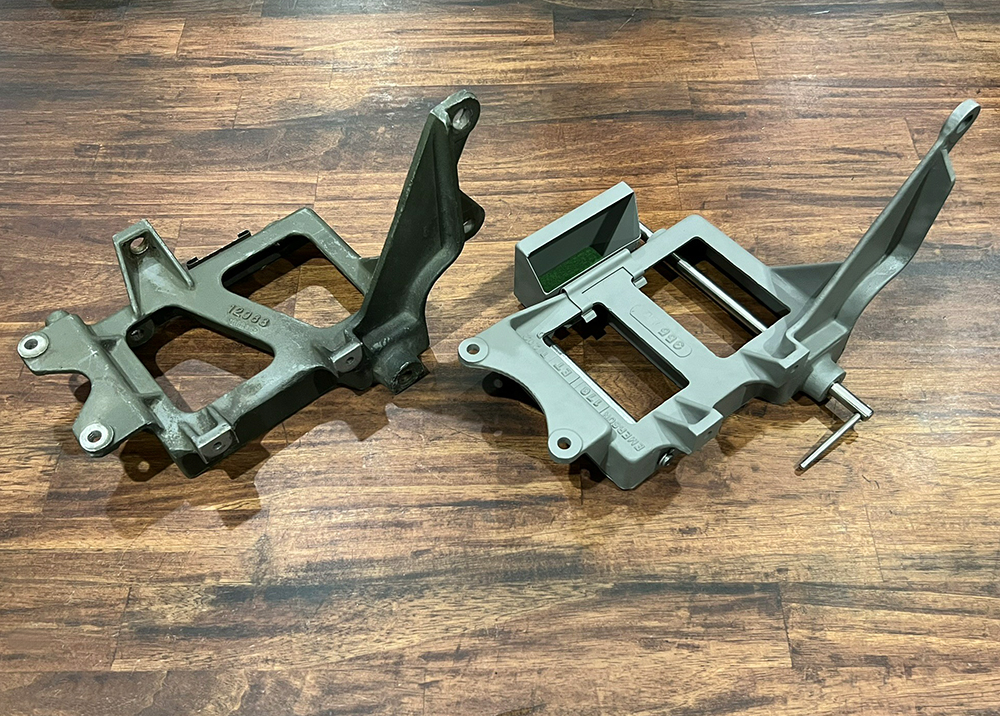
The late and early style sight and hand brackets beside one another.
The two nubs on the front side of either bracket are for attaching the hand control. Notice the difference in spacing between the two.
The darker gray on the late-war unit is worth noting. It appears to be a characteristic of A-13A turrets. Unlike Emerson Electric, who painted the interiors of their turrets green, Briggs painted their turrets gray. Why they changed to a darker mixture late in the war is unknown.
The later-style hand control is available for sale if anyone is interested in it. We feel that 560 USD would be a fair price for this piece.
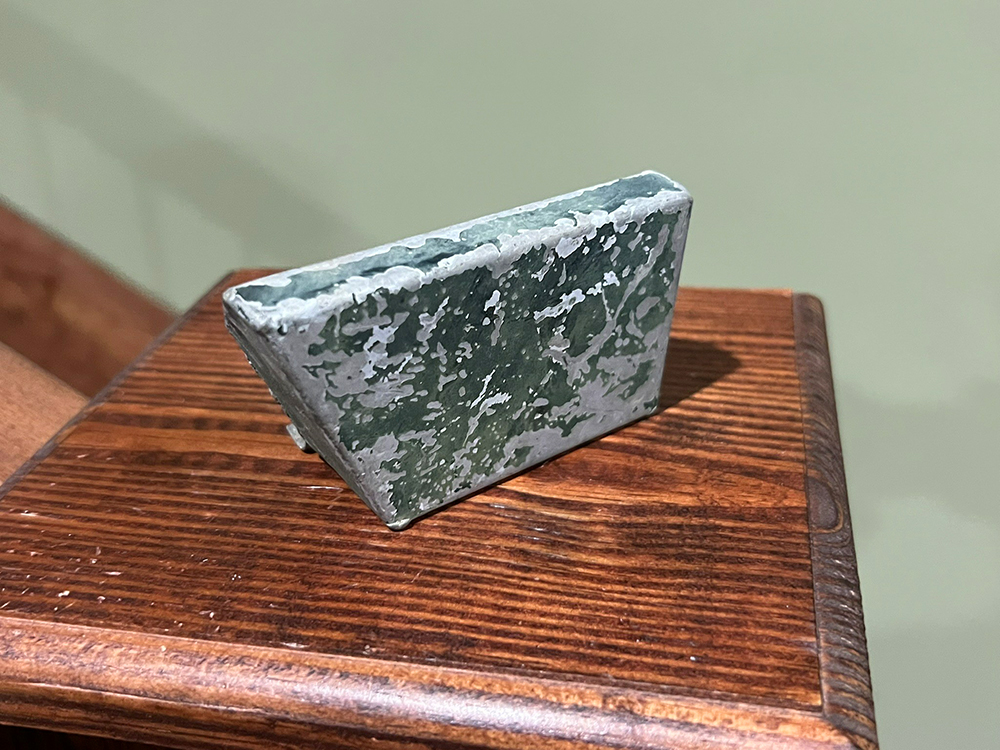
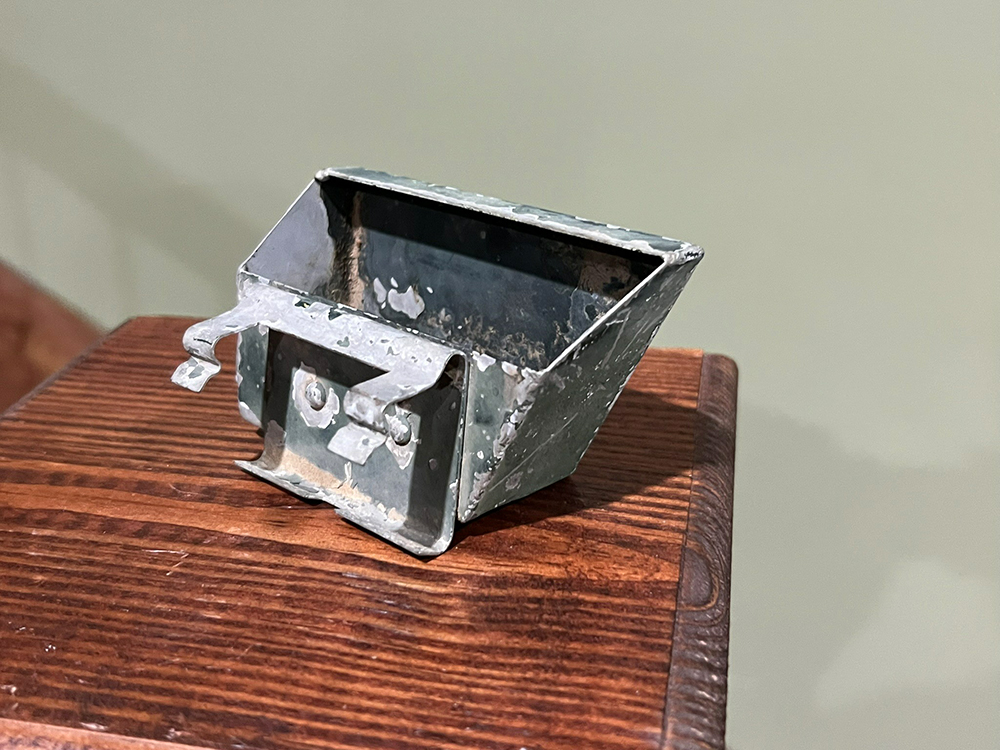
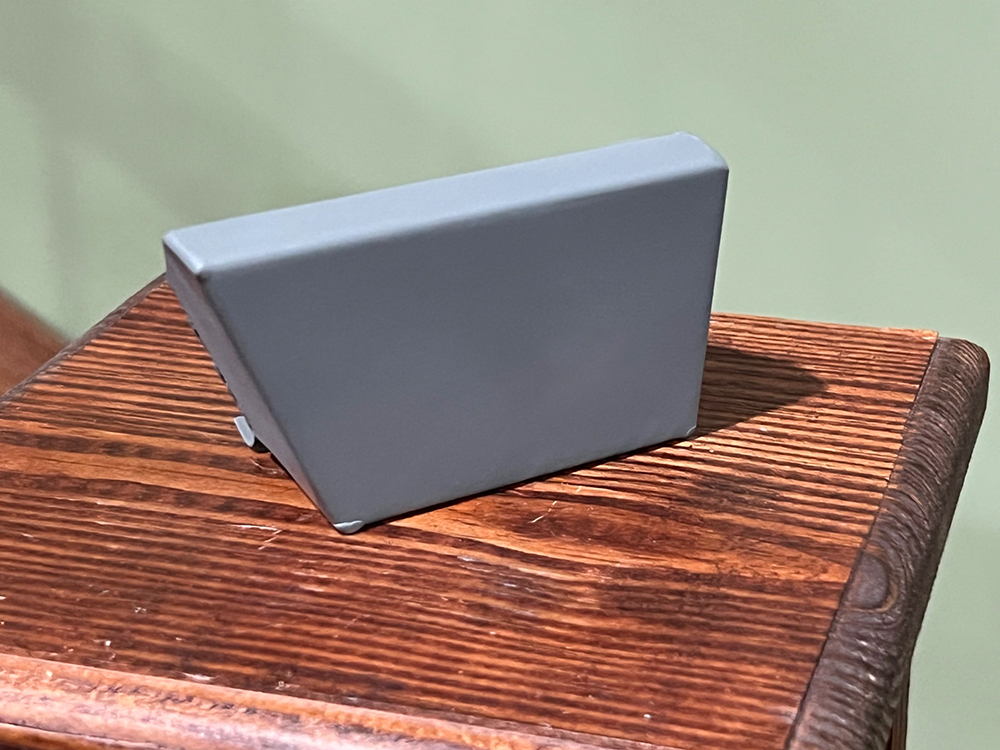
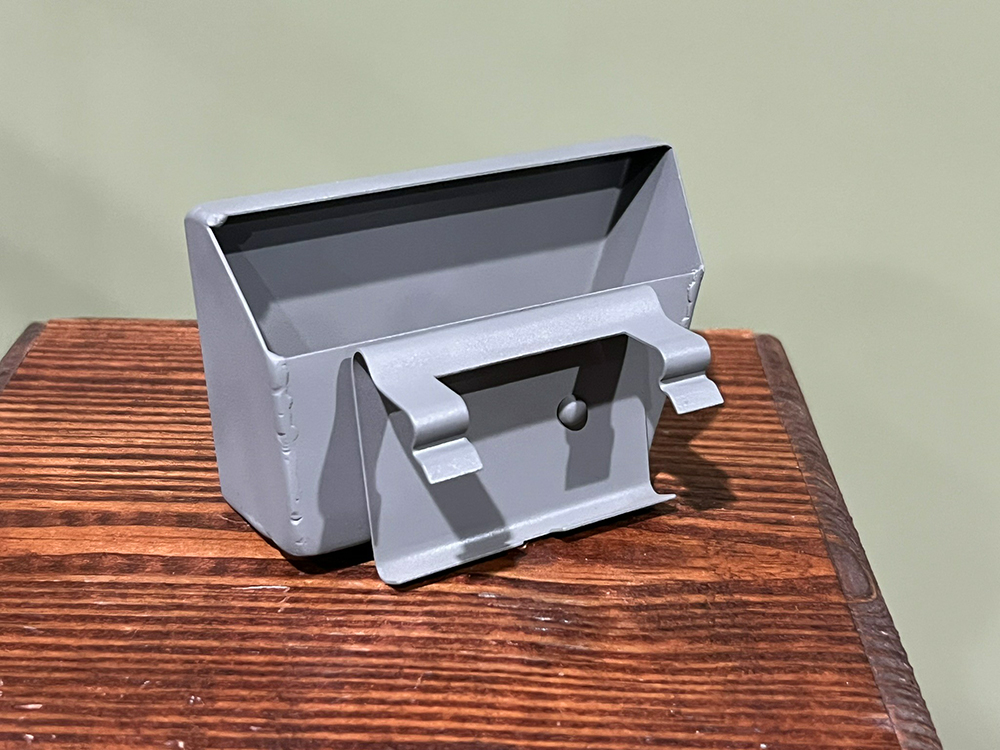
Before and after restoration shots of the hydraulic drip cup donated by Stijn Claus of Ninove, Belgium.
Despite our best efforts to restore Lucky Thirteen‘s ball as a matching parts turret, the sight bracket and drip cup were both originally Emerson-made, rather than Briggs.
Photo taken 27 December 2024.
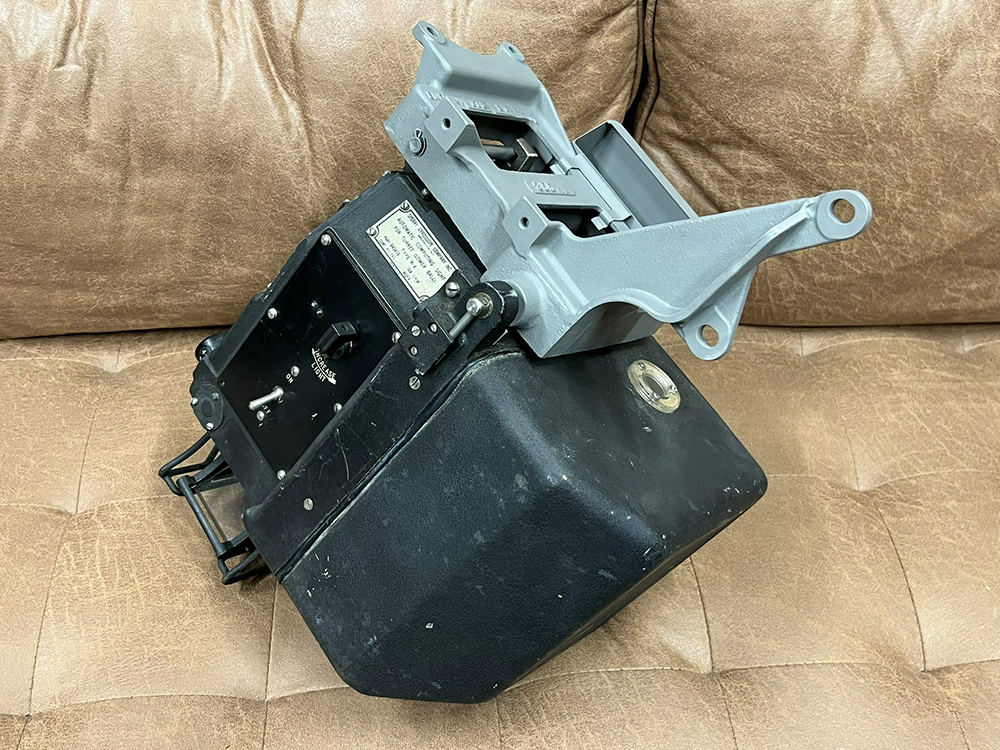
The newly restored early-style sight bracket is fitted to the ball turret’s Type K-4 Gunsight.
Photo taken 30 January 2025.
Since I know everyone enjoys seeing airframe photos, here are a couple shots from Ray’s work on the aft fuselage.
To recap –
Now that we have wrapped up work on the aft fuselage of Liberty Belle, we have started to rebuild the aft fuselage of the Lake Dyke B-17G (44-83790). Since this aircraft has never been restored before, work on it is a tad more forgiving. That being the case, the aft fuselages of this aircraft and Lucky Thirteen are being rebuilt at the same time, each being swapped in and out of the same jig.
These pictures show Station 7 – the back wall of the waist, which supports the tail wheel – from the Lake Dyke B-17G being test fit into the aft fuselage of Lucky Thirteen. Once ready, this piece will be installed into her fuselage and restoration on Lucky Thirteen‘s Station 7 can take its place.
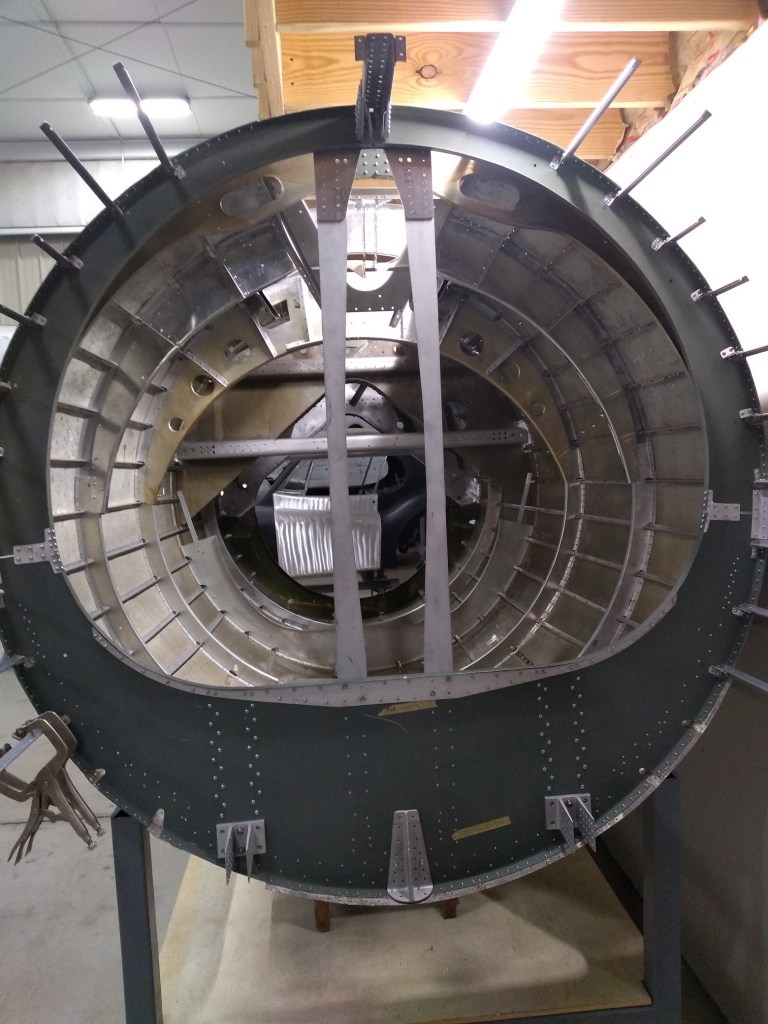
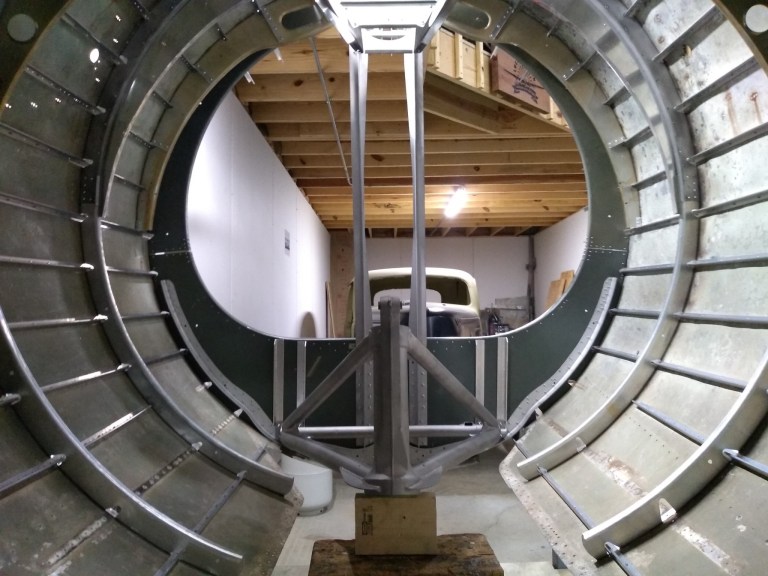
Photos taken 24 January 2025.
Hangar Thirteen volunteer Howard Lawson of Jacksonville, Florida recently donated a rather interesting piece to the project –
An AN-N6 Gun Camera.
One of those rarely known pieces, the Boeing B-17 was in fact designed to carry a gun camera in its tail position. The stinger-type tail gun, introduced on the B-17E, mounted a gun camera between its guns, and did so up to Boeing F Block-115. The camera was mounted vertically, with a 90° lens allowing it to face out. The control for this camera was mounted to the gunner’s left, immediately above his suit heater rheostat.
Strictly speaking, we do not know for sure if Lucky Thirteen carried a camera in her tail position. While there are a few photos of said cameras being installed, we have yet to see any footage taken from this position. This, along with the fact that the camera was eventually deleted in production, suggests that it was not particularly useful.
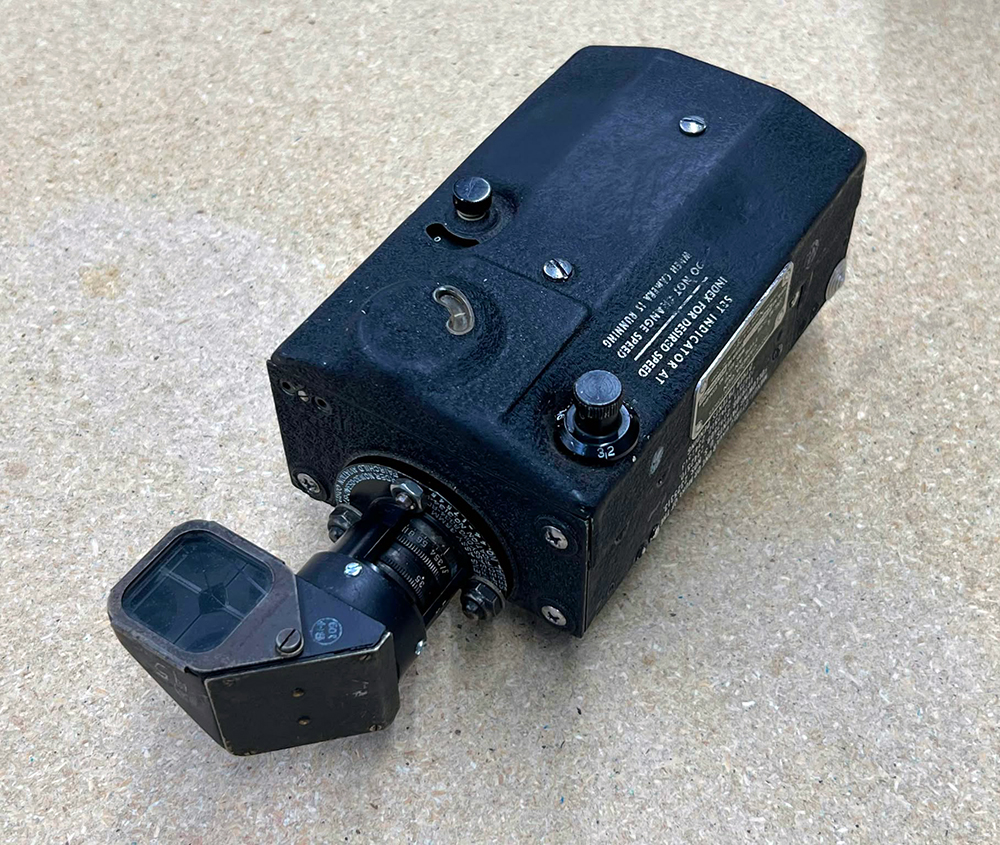
The newly donated AN-N6 gun camera.
Notice the 90° lens.
Photo taken 1 February 2025.
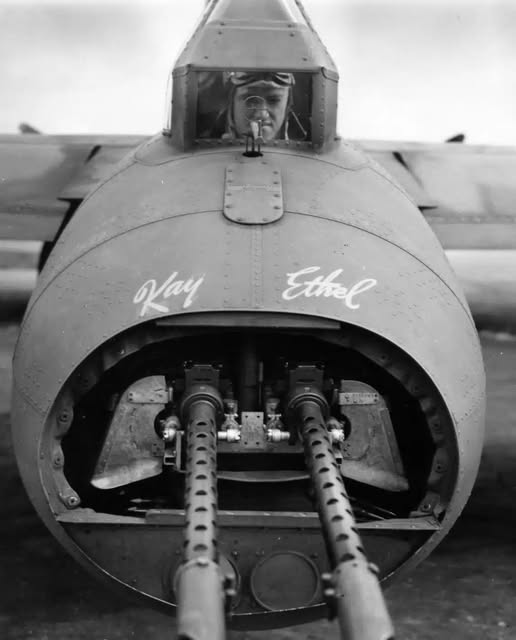
An airman, believed to be SSGT Frank M. White, poses at the tail position of Hell’s Angels (41-24577, 303BG).
Note the arrangement of the guns. Early stingers ran the ammunition through fixed tracks, with the belts at the end feeding upward into the guns via large braces. The canvas covers on these early stingers were often removed to ease maintenance. The gun camera bracket is missing from this aircraft, but the space for attaching is visible between the guns.
Photo taken 6 June 1943. White was killed 16 days later aboard Hunting Club (42-5432) over Hüls, Germany.
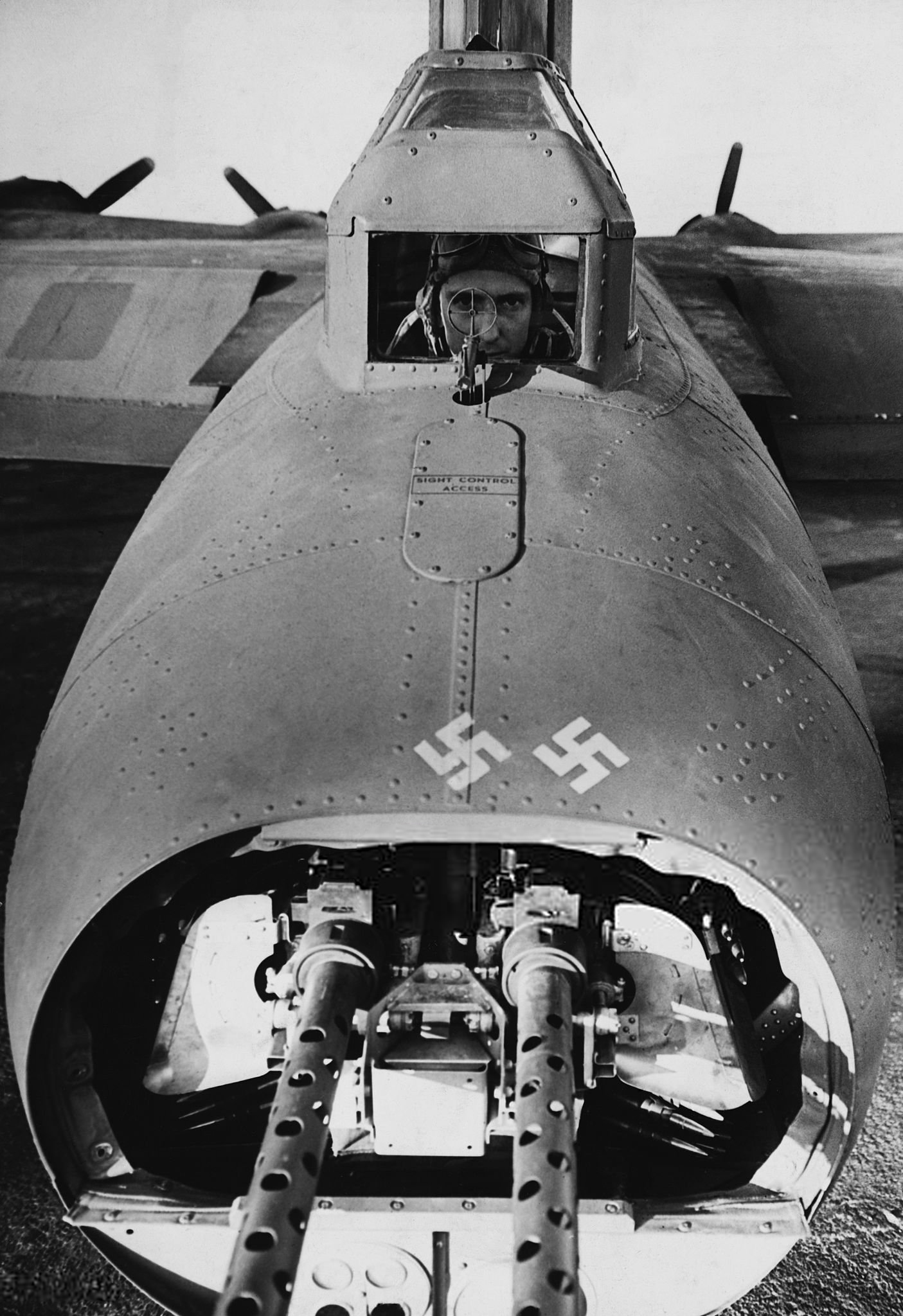
As the most effective gunnery position aboard the Boeing B-17, it makes sense that there was an effort to add a gun camera. Granted, while it is a fools errand to go through historical records and attempt to match up every aerial victory to who shot it down, victory credits do provide some general reference. The highest credited aerial gunner in the US Eighth Air Force was SSGT Donald W. Crossley, tail gunner on Brass Rail (42-3111, 95BG), who was credited with 12 aerial victories. Killed in a car accident before he could return home on a war bond tour, the next runner-up took his place – SSGT Michael Arooth, tail gunner aboard Tondelayo (42-29896, 379BG), with nine aerial victories.
Lucky Thirteen was credited with two aerial victories from her tail position. One occurred on the infamous Schweinfurt-Regensburg strike of 17 August 1943. SSGT Casmer R. Majewski, normally assigned to Battle Wagon (42-30026, 384BG) but flying aboard Lucky Thirteen that day, claimed two FW-190s, though he was only credited with one. The other victory credit went to Lucky Thirteen‘s regular tail gunner, SSGT William H. Ross, who was credited with a “probable” the previous day, alongside top turret gunner TSGT Oscar K. Hamblin.
This early stinger, again with the cover removed, still has its gun camera mount, though the camera itself is missing.
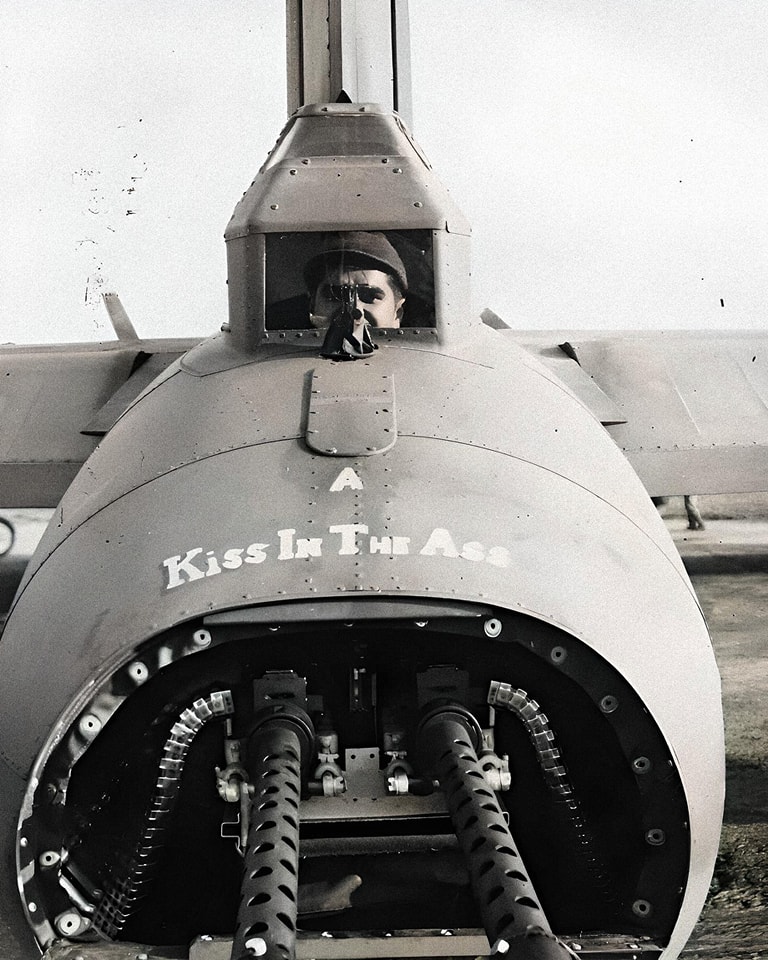
SSGT Louis Kiss poses in the tail position of Phyllis Marie (42-30713, 390BG). Kiss was awarded a Distinguished Flying Cross after being credited for downing three Luftwaffe interceptors in a period of ten minutes.
Note that stinger on this aircraft, a late-F like Lucky Thirteen, is fed by flexible feed chutes rather than static chutes attached to the airplane. It is unusual to see the cover removed on a stinger with this arrangement. Note that, once again, the gun camera bracket has been removed.
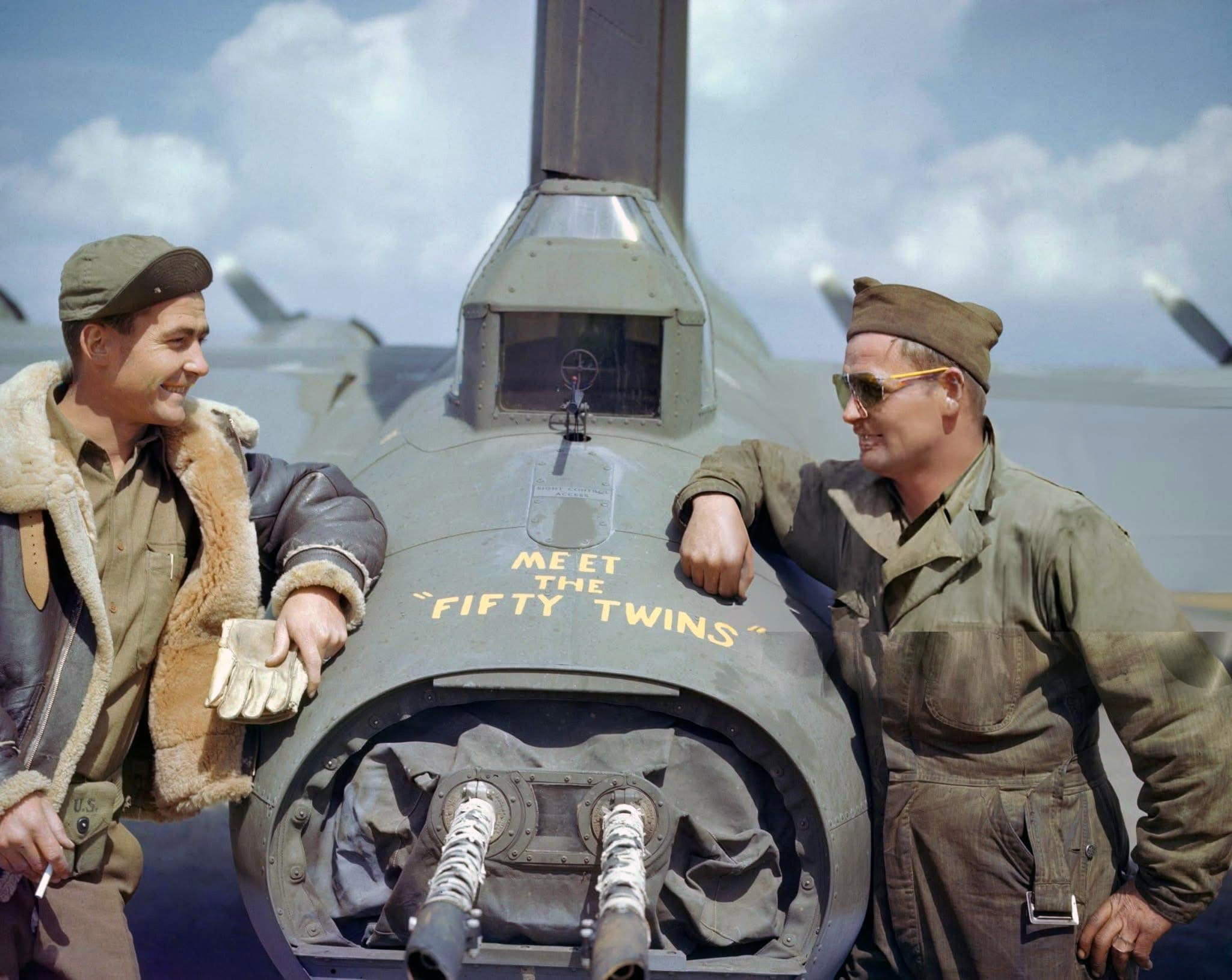
An unidentified B-17F, photographed sometime in May 1943.
Note that not only is the canvas cover still on this aircraft, but there is a clear piece of plexiglass between the guns so the camera can see out (when used).
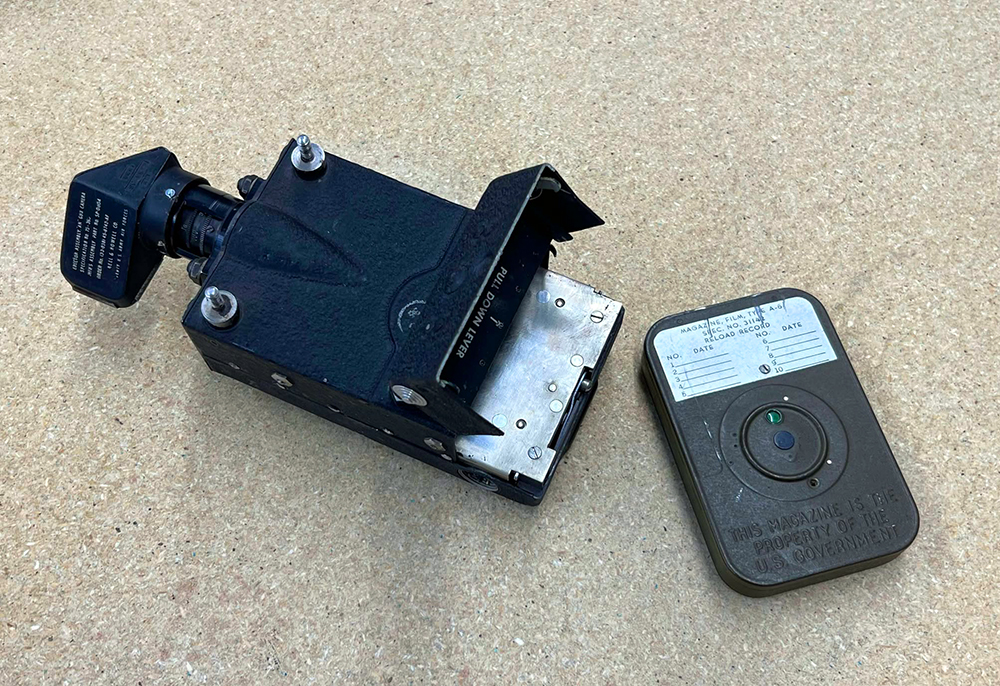
The AN-N6 was one of a series of gun camera variants, all varying little in design. In fact, they were designated purely based on the lens assembly. The camera operated on 24V DC and used a Type A-6 film magazine, shooting footage on 16mm. The camera was activated when the guns were fired and continued to roll for up to five seconds after release.
Photo taken 1 February 2025.
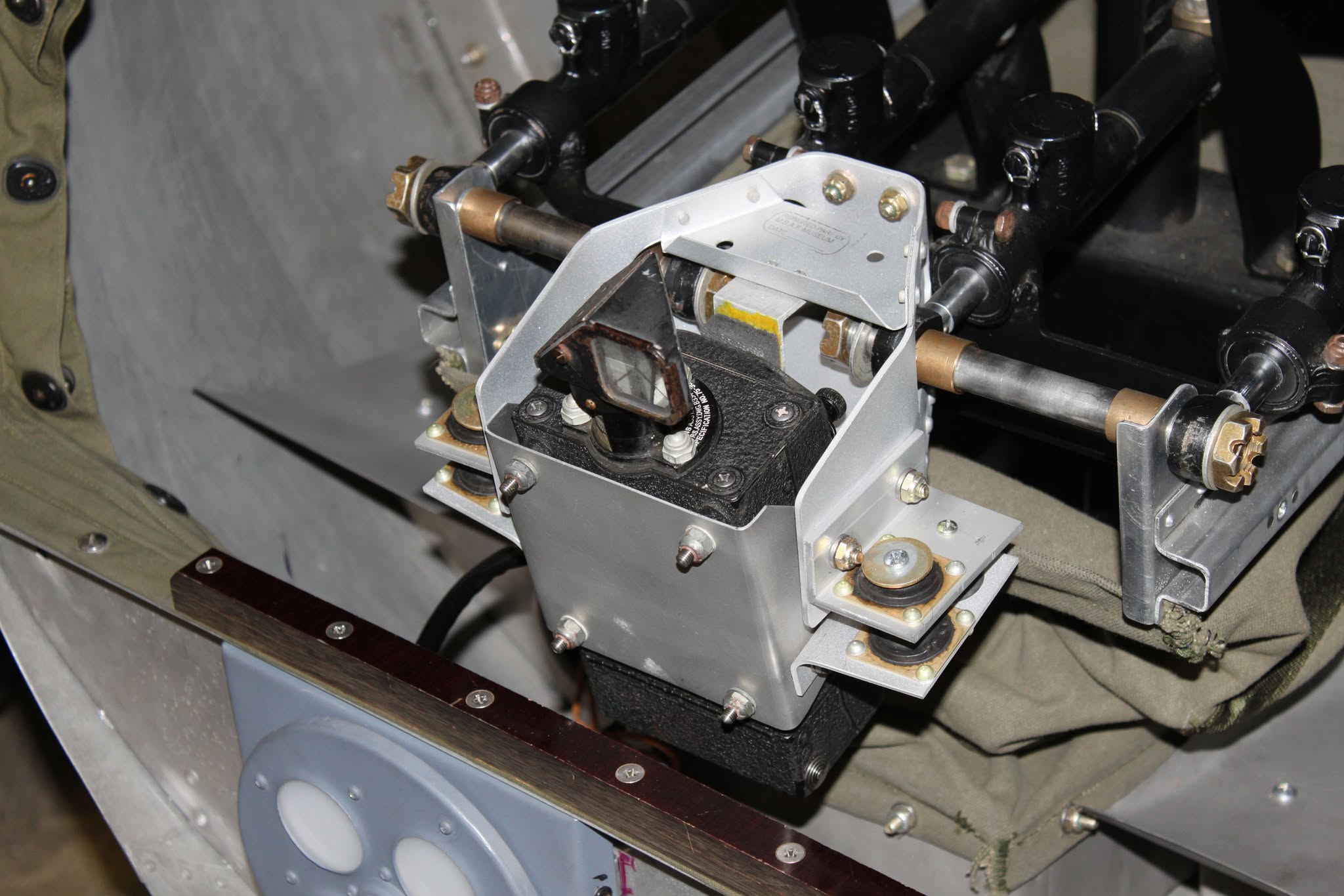
The gun camera installed in the tail of Memphis Belle (41-24485, 91BG) at the National Museum of the US Air Force in Dayton, Ohio.
Photo taken by Karl Hauffe.
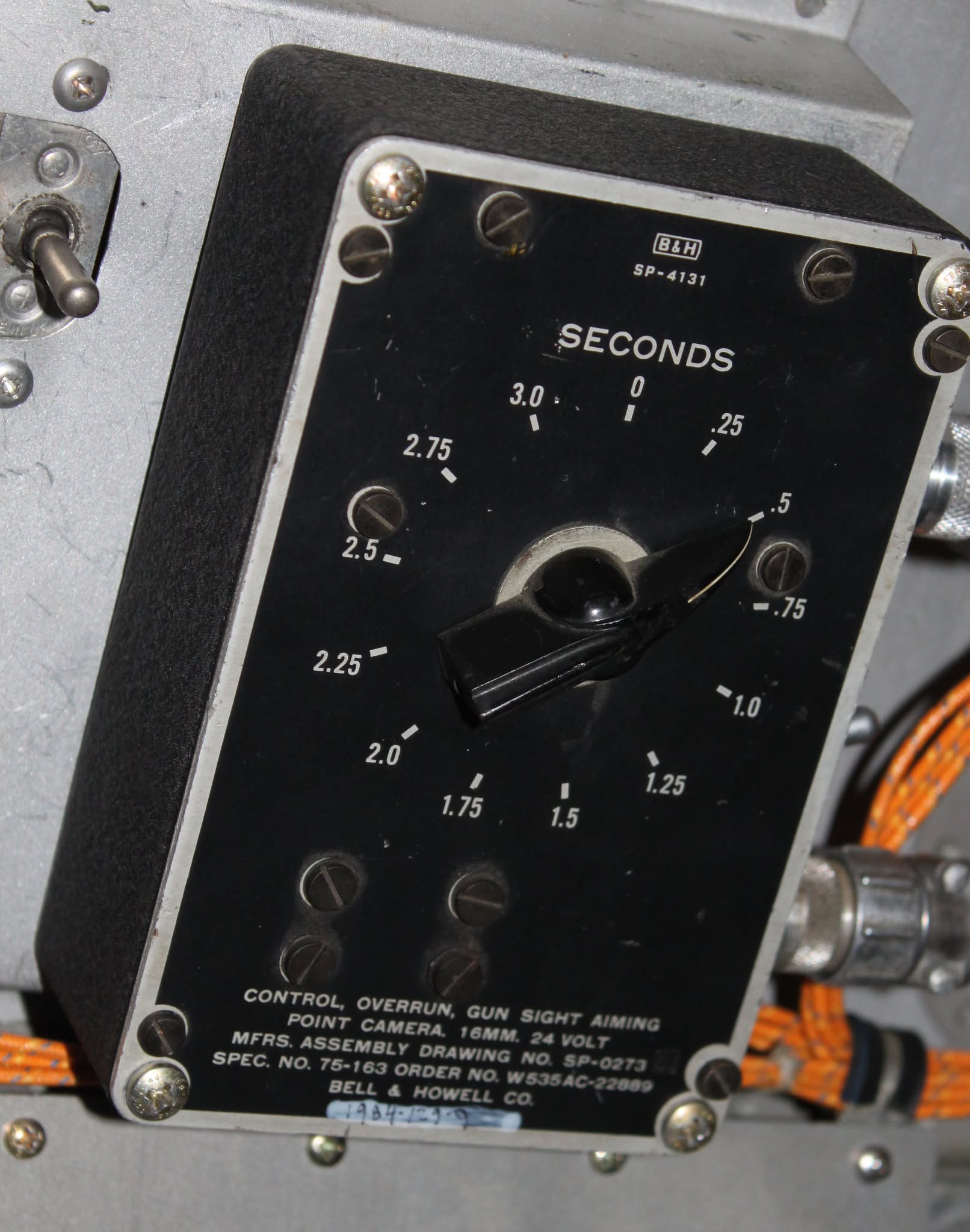
The control assembly for the gun camera installed in the tail of Memphis Belle (41-24485, 91BG).
We are still in need of this piece for Lucky Thirteen.
*This piece has since been acquired.
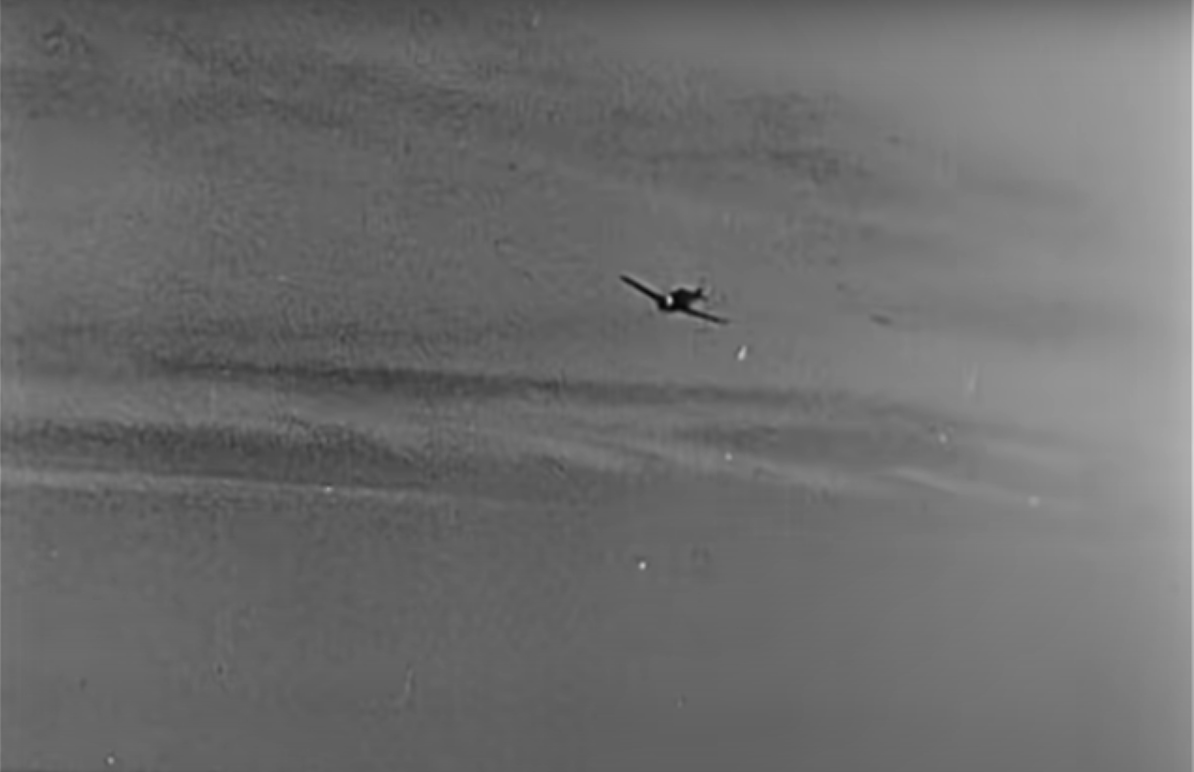
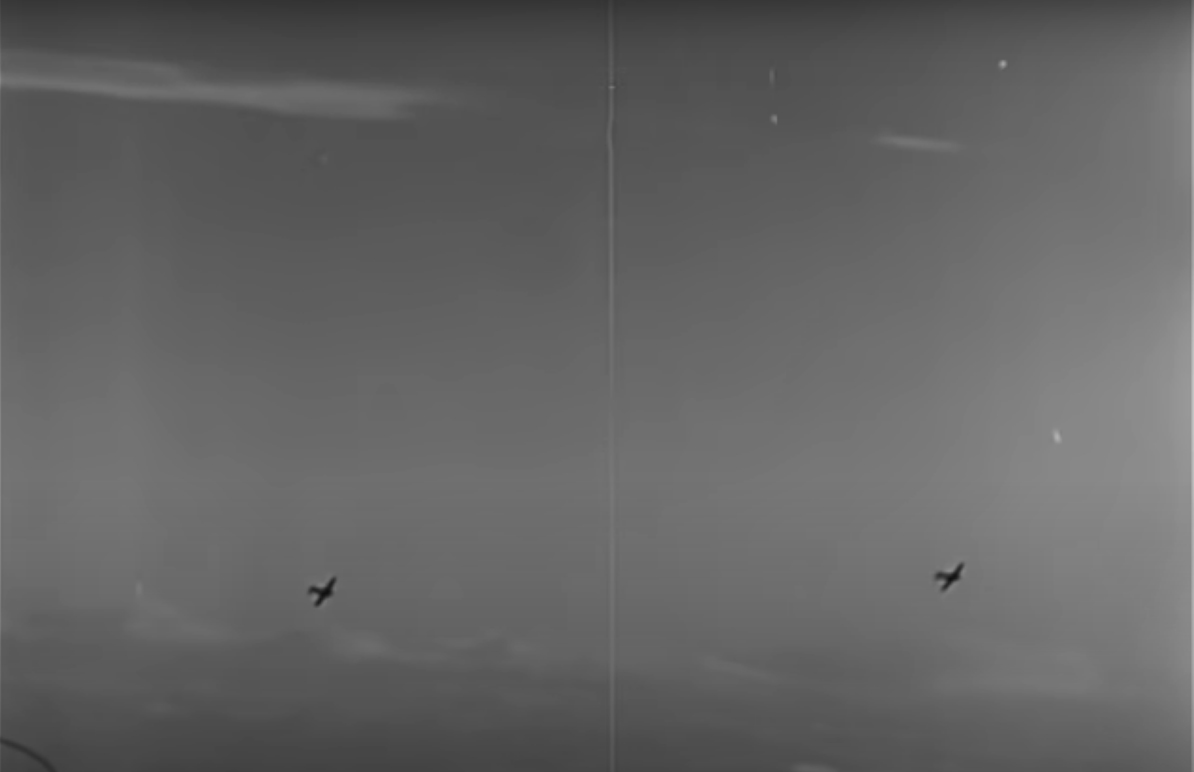
Screencaps from Target For Today (1944) a a promotional film detailing US strategic bombing operations, chronicling the 9 October 1944 strike on the Arado Flugzeugwerke of Anklam, the Focke-Wulf Flugzeugbau plant of Malbork (Marienburg), and the ports of Gdańsk, Germany and Gdynia, Poland.
Were these clips taken using a heavy bomber’s tail gun camera? Possibly. The horizon and movement of the fighters in camera suggest they were taken facing the rear.
If you enjoyed this article, please consider supporting our work on Lucky Thirteen.
The Hangar Thirteen Foundation is a 501c3 nonprofit based in Asheville, North Carolina. We have no wealthy benefactor but are nevertheless uncompromising in our dedication to accuracy. Contributions toward the project are tax deductible and you can guarantee that fruits of your involvement will be seen here online. Financial donations help more than you can imagine, but for those uncomfortable or unable, we try to be open about the parts we need as well. Should you have a part you would like to contribute, just contact us. If you wish to donate, you can do so via PayPal using the Donate link. Or, if you would like to avoid PayPal taking its fee, you can send a check to Hangar Thirteen. Because we will soon be changing locations, we recommend my home address at:
Gerad Allen Blume
442 Old Chalk Bed Road
Batesburg, SC 29006
Everything we have accomplished thus far has been due to the support of those who believe in us. To those who have contributed before, we cannot thank you enough for the support you have given us. We hope we do you proud as we continue our efforts to properly honor the past.
Keep the show on the road!
